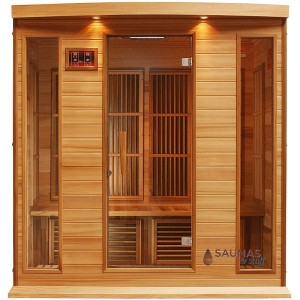Buying a sauna to install in your home is an exciting experience. A new sauna means you no longer have to mingle with strangers at the gym to enjoy the relaxation and health benefits of a sauna. Now, whenever you want to sit in a sauna and break a good sweat, you need only walk down the hall in your own home or head out to your back yard. As you go shopping for a new sauna online, you'll come across a lot of different models and options.
The most common heaters you might come across are ceramic and carbon fiber heaters. If you feel confused by those options, you’re not alone. Few people know how a sauna works, they're just glad it does. In this post, you'll learn the crucial differences between ceramic heaters and carbon fiber heaters.
Even Heat Distribution
The heating surface area of a carbon fiber heater makes it easier for this type of heater to provide even heat distribution compared to ceramic models. The surface area of a carbon fiber heater is much larger and composed of thin carbon plates. This allows these models to provide even heat distribution that lacks hot and cold spots which are typical of ceramic heaters. As a result, you will enjoy heat that is well dispersed throughout your sauna.
Use of Infrared Rays
Carbon fiber heaters emit warm rays that are closer to far infrared than a ceramic heater is capable of producing. The result is a heat that is beneficial for your health and healing inside your sauna. Heat emitted from carbon fiber heaters has a slightly lower temperature, which allows you to stay in the sauna longer and allow for deep tissue penetration. When the sauna heats you from the inside out, it provides better relief of stress, sore muscles, and aching joints.
Lower Energy Costs
Because a carbon fiber heater produces heat at a lower temperature, and provides more even heat distribution, you'll enjoy a much lower hit to your monthly utility bills. The engineering of carbon fiber heaters is already energy-efficient in nature compared to ceramic heaters, but the improved performance of carbon fiber models means you'll waste less money heating your sauna and maintaining temperature levels.
Better Life Span
The last thing you want to do is buy a new sauna now, and be forced to potentially replace your heater in the next decade. The average ceramic heater has a lifetime expectancy of just 5,000 hours, compared to a minimum of 20,000 hours for a carbon fiber model.
As you consider the purchase of a new sauna, take a few moments to consider the type of heater powering your model. While it might not be the first thing to cross your mind, the heater in the model you purchase will impact the performance, efficiency, effectiveness, and maintenance cost of the saunas you are considering.















